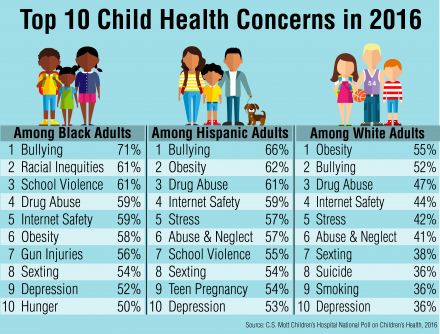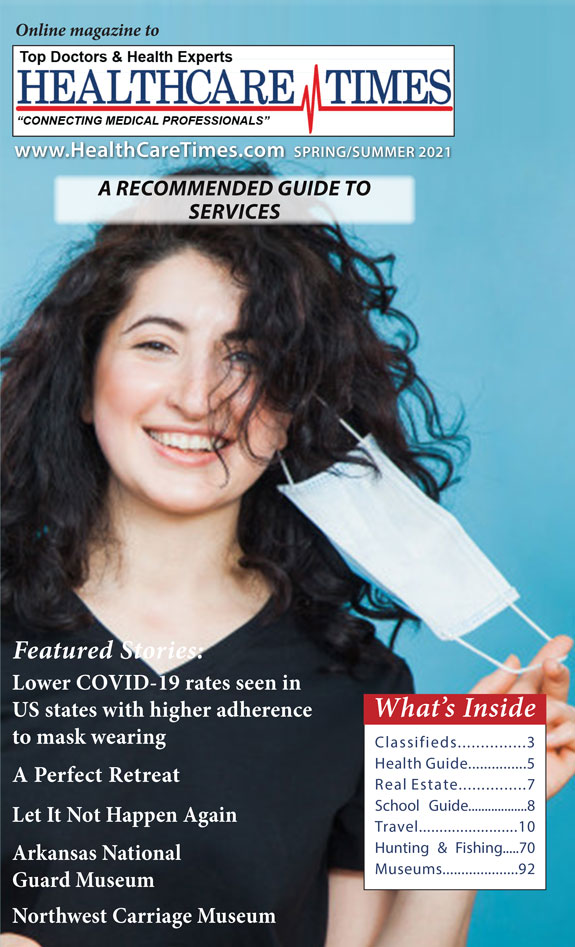News
Newswise — New research led by scientists from King's College London and the University of Bristol has found that a high-fat, high-sugar diet during pregnancy may be linked to symptoms of ADHD in children who show conduct problems early in life.
Published today in the Journal of Child Psychology and Psychiatry, this study is the first to indicate that epigenetic changes evident at birth may explain the link between unhealthy diet, conduct problems and ADHD.
Early onset conduct problems (e.g. lying, fighting) and attention-deficit/hyperactivity disorder (ADHD) are the leading causes of child mental health referral in the UK. These two disorders tend to occur in tandem (more than 40 per cent of children with a diagnosis of conduct disorder also have a diagnosis of ADHD) and can also be traced back to very similar prenatal experiences such as maternal distress or poor nutrition.
In this new study of participants from the Bristol-based 'Children of the 90s' cohort, 83 children with early-onset conduct problems were compared with 81 children who had low levels of conduct problems. The researchers assessed how the mothers' nutrition affected epigenetic changes (or DNA methylation) of IGF2, a gene involved in fetal development and the brain development of areas implicated in ADHD - the cerebellum and hippocampus. Notably, DNA methylation of IGF2 had previously been found in children of mothers who were exposed to famine in the Netherlands during World War II.
The researchers from King's and Bristol found that poor prenatal nutrition, comprising high fat and sugar diets of processed food and confectionary, was associated with higher IGF2 methylation in children with early onset conduct problems and those with low conduct problems.
Higher IGF2 methylation was also associated with higher ADHD symptoms between the ages of 7 and 13, but only for children who showed an early onset of conduct problems.
Dr Edward Barker from King's College London said: 'Our finding that poor prenatal nutrition was associated with higher IGF2 methylation highlights the critical importance of a healthy diet during pregnancy.
'These results suggest that promoting a healthy prenatal diet may ultimately lower ADHD symptoms and conduct problems in children. This is encouraging given that nutritional and epigenetic risk factors can be altered.'
Dr Barker added: 'We now need to examine more specific types of nutrition. For example, the types of fats such as omega 3 fatty acids, from fish, walnuts and chicken are extremely important for neural development.
'We already know that nutritional supplements for children can lead to lower ADHD and conduct problems, so it will be important for future research to examine the role of epigenetic changes in this process.'
###
Newswise —
The majority of smokers who successfully switch to vaping say they have fewer respiratory infections, according to a study led by Queen Mary University of London (QMUL).
The on-line survey of 941 respondents assessed subjective changes in respiratory symptoms in smokers who switched to vaping for at least two months. The results, published in theJournal of Addiction Research & Therapy, show that 66 per cent of respondents reported an improvement in respiratory symptoms, 29 per cent reported no change and 5 per cent reported worsening.
Senior author Professor Peter Hajek from QMUL said: "There is no doubt that e-cigarettes are much safer than conventional cigarettes, but smokers are still led to believe that they're dangerous. This misinformation includes a misreported study on rats that claimed that vaping may increase vulnerability to infections. These new findings from human vapers show that this is not the case.
"The study needs to be interpreted with caution because it is based on self-reported data, and further studies using objective measures are needed. However, the present results provide sufficient information to suggest that vaping does not increase infection rates and may in fact lead to a decrease in infections."
Some previous cell and animal studies have been interpreted as suggesting that vaping may increase vulnerability to infection, but these studies did not use realistic exposure levels. Human trials have reported no significant adverse respiratory effects associated with e-cigarette use for up to 1.5 years and a follow-up study of smokers with asthma who switched to vaping found significant improvements.
The researchers say that it is not surprising that the survey respondents noticed improvements in their respiratory health. This is because smoking increases susceptibility to respiratory infections and stopping smoking can be expected to have a positive effect. In addition to this, vaping may also provide some antimicrobial protection through the e-liquid ingredient propylene glycol, though further evidence is needed to confirm this.
The main limitation of the study is that the reports are subjective. Future studies should assess respiratory symptoms objectively and on unselected samples of vapers. Despite the limitations, the researchers say that the study provides a reasonable reassurance that vaping does not promote respiratory infections and may in fact reduce them.
###
Newswise —
Obstructive sleep apnea – a disorder that affects nearly one out of four people between the ages of 30 and 70 – is a common cause of high blood pressure. In the Aug. 17, 2016, issue of the journal Science Signaling, researchers based primarily at the University of Chicago describe the signaling cascade that leads to this form of hypertension and suggest ways to disrupt those signals and prevent elevated blood pressures.
“Our results, using a rodent model, establish a mechanism that is the cause of apnea-associated hypertension,” said study leader Nanduri Prabhakar, PhD, director of the Institute for Integrative Physiology and Center for Systems Biology of Oxygen Sensing at the University of Chicago. “They also offer a novel way to block the process, preventing this form of hypertension and restoring normal blood pressures.”
The connection between sleep apnea and high blood pressure begins in the carotid body, a small cluster of cells located in the carotid arteries, which pass through the right and left sides of the neck. Chemosensory cells in the carotid bodies constantly measure oxygen levels in the blood and use that information to regulate breathing. When people with sleep apnea periodically slow or stop their breathing during sleep, their blood-oxygen levels plummet. The carotid bodies recognize this deficit and quickly release signals to increase breathing and bring oxygen levels back to normal. These signals, however, can also increase blood pressure, which can lead to strokes during sleep.
“In both central and obstructive sleep apnea, the acute elevations in blood pressure associated with apneic episodes may predispose patients to hemorrhagic stroke, while chronic hypertension increases the risk of heart failure,” the authors wrote. “Thus, controlling hypertension in sleep apnea patients is a major clinical problem.” So the researchers carefully mapped out the chain of signaling events that began with sleep-disordered breathing and led to the onset of hypertension. When an episode of apnea causes low blood oxygen levels, the carotid bodies quickly detect the decrease and begin to generate reactive oxygen species (a natural byproduct of the normal metabolism of oxygen). These inactivate heme oxygenase-2, an enzyme that generates carbon monoxide (CO).
This leads to an increase in hydrogen sulfide, which stimulates the carotid bodies to send out chemical signals to take in more oxygen. Unfortunately, those signals also stimulate the sympathetic nervous system and cause blood vessels to constrict, boosting blood pressure. The standard therapies for hypertension caused by constricted vessels “do not work in this form of hypertension,” Prabhakar said. In the 1960s, when the relationship between the carotid bodies and asthma was being first investigated, researchers tried to treat the disease by surgical removal of the carotid bodies. However, some of those patients developed sleep apnea.
Although carotid body resection prevented hypertension, that approach came with serious side effects. Because they lacked the urge to breathe more during exertion, patients were unable to exercise safely, Prabhakar said, adding that “some died in their sleep from extended apneic episodes.”
The authors suggest instead that drugs designed to inhibit the enzyme cystathionine-y-lyase – required for the production of hydrogen sulfide, the signal to increase oxygen intake – could be used to disrupt the cascade of signals leading to apnea-related hypertension. “A major finding of the present study is that blockade of hydrogen sulfide synthesis is sufficient to prevent carotid body activation and hypertension in intermittent hypoxia-exposed rodents,” the authors note. Treating rats with a cystathionine-y-lyase inhibitor L-propargylglycine (L-PAG) “restored normal carotid body function, sympathetic nerve activity and blood pressure, and blocked hypertensive responses to simulated apneas.” “Our results,” they conclude, “suggest that inhibiting cystathionine-y-lyase to reduce hydrogen sulfide signaling in the carotid body with more potent inhibitors than L-PAG may be a novel approach to treat hypertension in patients with sleep apnea.”
The National Institutes of Health supported this effort. Additional authors were Guoxiang Yuan, Ying-Jie Peng, Shakil Khan, Jayasri Nanduri, Amritha Singh and Ganesh Kumar from the University of Chicago, and Chirag Vasavda, Gregg Semenza and Solomon Snyder of Johns Hopkins University School of Medicine.
Newswise —
A team of researchers from nine leading academic hospitals and research centers have published a paper in the early online edition of the journal Cancer that describes pulmonary outcomes among childhood cancer survivors. The study also evaluates the impact of complications such as asthma, chronic cough, emphysema and recurrent pneumonia on daily activities.
Led by Andrew C. Dietz, MD, MSCR, of the Center for Childhood Cancer and Blood Diseases at Children’s Hospital Los Angeles, and Daniel A. Mulrooney, MD, of St. Jude Children’s Research Hospital, the study shows that cumulative incidence of lung complications continues to increase up to 25 years from initial cancer diagnosis, and survivors treated with a combination of chemotherapy and radiation are at highest risk.
Based on self-reporting by more than 14,000 individuals identified through the Childhood Cancer Survivor Study, a multi-institutional retrospective cohort study, the findings suggest the need for follow-up health care with advancing age and time from diagnosis. Medical advances have led to improved survival rates for children diagnosed with cancer – with five-year survival rates now exceeding 80 percent – and it is estimated that there are more than 420,000 survivors of childhood cancer alive in the United States.
Despite these improvements, late mortality rates for cancer survivors exceed those of the general population. Leading causes of death in this population include subsequent cancer, followed by pulmonary and cardiovascular events. Lung tissue is particularly sensitive to cancer treatment and the cumulative incidence for pulmonary symptoms -- such as lung fibrosis, chronic cough and difficult or labored breathing with exercise – increases over time.
“While often asymptomatic, damage to the lungs may limit activities of daily living with potential impact on the overall quality of life,” said Dietz. The researchers identified 20,690 five-year cancer survivors, of whom 69 percent completed a baseline survey, and/or one of two follow-up surveys years later. A comparison, or control, group of 4,027 survivor siblings were also surveyed.
The rates of chronic cough, oxygen need, lung fibrosis and recurrent pneumonia were elevated among survivors when compared to the control group. Survivors with some of these pulmonary events were also more likely to report limitations on their activities than siblings with the same conditions. “This study adds to our understanding of specific, long-term risks to pulmonary health for survivors of childhood cancer, and will help refine guidelines for appropriate screening, health surveillance and counseling,” said Mulrooney, adding that such knowledge will hopefully contribute to the design and testing of better, targeted interventions to decrease adverse pulmonary events in this population.
Additional contributors to the study include Yan Chen, University of Alberta, Edmonton; Yutaka Yasui, PhD, Kirsten K. Ness, PhD, Leslie L. Robison, PhD, and Gregory T. Armstrong, MD, St. Jude Children’s Research Hospital; James S. Hagood, Rady Children’s Hospital, San Diego; Eric J. Chow, MD, Fred Hutchinson Cancer Research Center, Seattle; Marilyn Stovall, PhD, University of Texas, M.D. Anderson Cancer Center; Joseph P. Neglia, MD, University of Minnesota; Kevin C. Oeffinger MD, Memorial Sloan Kettering Cancer Center, New York; and Ann C. Mertens, PhD, Emory University, Children’s Healthcare of Atlanta. The study was supported by the National Cancer Institute (CA55727), a Cancer Center Support grant (CA21765), and the American Lebanese-Syrian Associated Charities.
Newswise — Although strollers and carriers are typically used to safely transport children, injuries do occur while using these products. A study conducted by the Center for Injury Research and Policy of the Research Institute at Nationwide Children’s Hospital found that, over a 21-year period from 1990 through 2010, almost 361,000 children aged 5 years and younger were treated in U.S. hospital emergency departments for stroller- or carrier-related injuries – that’s about two children every hour.
The study, published online today in Academic Pediatrics, found that most children were injured when they fell from the stroller (67%) or carrier (63%) or when the stroller (16%) or carrier (29%) tipped over. The head (43% stroller, 62% carrier) and face (31% stroller, 25% carrier) were the most commonly injured parts of the body.
While many of the injuries were soft tissue injuries like bumps and bruises (39% for strollers, 48% for carriers), traumatic brain injuries (TBIs)/concussions accounted for one-quarter (25%) of stroller-related injuries and one-third (35%) of carrier-related injuries. In fact, the proportion of stroller-related TBIs/concussions doubled during the study period going from 19% of injuries in 1990 to 42% of injuries in 2010 and the proportion of carrier-related TBI/concussions tripled going from 18% of injuries in 1990 to 53% of injuries in 2010.
“While these products are used safely by families every day, when injuries do occur they can be quite serious,” said Kristi Roberts, MS, MPH, study author and research associate in the Center for Injury Research and Policy at Nationwide Children’s. “The majority of injuries we saw were head injuries which is scary considering the fact that traumatic brain injuries and concussions in young children may have long term consequences on cognitive development.”
While most of the children were sent home after receiving treatment in the emergency department, 7% of children with a carrier-related injury and 2% with a stroller-related injury were hospitalized. This means that every day in the U.S. a child is hospitalized for a stroller or carrier-related injury. TBIs/concussions accounted for 65% of stroller-related hospitalizations and 79% of carrier-related hospitalizations.
“As parents, we place our most precious cargo in strollers and carriers every day,” said Roberts. “By taking a few simple steps like making sure your child is buckled up every time he is in his stroller or carrier and being aware of things that can cause these products to tip over can help prevent many of these injuries.”
Safety experts recommend the following to help prevent injuries from strollers and carriers:
• Always buckle up. Follow all manufacturer’s instructions for properly securing children in strollers or carriers. Make sure your child is seated and buckled in at all times.
• Keep handles clear. Hanging heavy items like purses and bags on the handle of strollers can cause them to tip over. Store these items under the stroller or on your shoulder. If getting a new stroller, look for one with a wide wheel base that will be harder to tip over.
• Get a model that fits your child. Strollers and carriers are not one-size fits all. Both strollers and carriers have age and weight limits. Make sure to get one that is the right size for your child and follow all manufacturer’s guidelines for use.
• Lock it. Lock stroller wheels when you “park” to prevent it from rolling away unexpectedly. Be careful using a stroller near a curb and in high traffic areas where sidewalks are not available.
• Keep it low. Keep carriers low to the ground so the child has a shorter fall if the carrier tips over.
• Check for recalls. Both strollers and carriers have had recalls in recent years. Check www.recalls.gov to see if the model you plan to use has been recalled.
“While the number of overall injuries from strollers and carriers did go down during the 21 years we looked at in our study, it is still unacceptably high,” said Roberts. “The updates to manufacturer standards and frequent product recalls in recent years have been a good first step but the large number of injuries we are still seeing shows we need to do more.”
Data for this study were obtained from the National Electronic Injury Surveillance System (NEISS), which is operated by the U.S. Consumer Product Safety Commission. The NEISS database provides information on consumer product-related and sports- and recreation-related injuries treated in hospital emergency departments across the country.
The Center for Injury Research and Policy (CIRP) of The Research Institute at Nationwide Children’s Hospital works globally to reduce injury-related pediatric death and disabilities. With innovative research at its core, CIRP works to continually improve the scientific understanding of the epidemiology, biomechanics, prevention, acute treatment and rehabilitation of injuries. CIRP serves as a pioneer by translating cutting edge injury research into education, policy, and advances in clinical care. For related injury prevention materials or to learn more about CIRP, visit www.injurycenter.org.
Newswise —
A diet rich in fruits, vegetables, low-fat dairy and reduced in fats and saturated fats (the DASH diet), designed decades ago to reduce high blood pressure, also appears to significantly lower uric acid, the causative agent of gout. Further, the effect was so strong in some participants that it was nearly comparable to that achieved with drugs specifically prescribed to treat gout, a new study led by Johns Hopkins researchers shows.
The findings--derived from a randomized clinical trial--could offer an effective, safe and sustainable dietary approach to lower uric acid and possibly prevent gout flare-ups in those with mild to moderate disease and who can't or don't want to take gout drugs.
Dietary excesses, such as consuming a lot of red meat and alcohol, have long been associated with gout, a disease marked by high levels of uric acid in the blood and whose causes remain somewhat of an enigma despite centuries of investigation. The Hopkins researchers noted that while symptoms of gout outbreaks -- severe inflammation and sharp pain in the joints, particularly the base of the big toe -- have been linked to elevated uric acid, it's been unclear exactly what type of diet might lower uric acid and decrease the risk of flare-ups.
In an effort to find out, Stephen P. Juraschek, M.D., Ph.D., research and clinical fellow in general internal medicine at the Johns Hopkins University School of Medicine, and his colleagues used data from the DASH (Dietary Approaches to Stop Hypertension) clinical trial, a widely popular and often-cited study whose results were first published in 1997. These results showed that the DASH diet --which emphasizes reduced salt, whole grains, fruits, vegetables, low-fat dairy products and reduced intake of red meats, sweets and saturated fats -- had a marked positive improvement on blood pressure and cholesterol.
In the original DASH-sodium trial, 412 participants ate either the DASH diet or a typical American diet for three months. For each month of the study, the participants' diets provided a different level of sodium in a random order, including low (1.2 grams per day or about half a teaspoon), medium (2.3 grams per day or about one teaspoon), and a high level (3.4 grams per day or about 1.5 teaspoons). The high sodium level was comparable to the average daily intake in a typical American diet.
At baseline and at the end of each sodium intake period, the researchers conducting the original study also took blood samples, which were analyzed for a variety of blood markers, including uric acid.
In this new study, Juraschek and his colleagues examined these data to determine whether and how each intervention affected uric acid blood concentrations. They found that the DASH diet led to a modest 0.35 milligrams per deciliter decrease in uric acid concentrations overall. However, the higher participants' baseline uric acid levels, the more dramatic the decrease. For those with the highest baseline uric acid levels--more than 7 milligrams per deciliter -- for example, the decrease was as high as 1.3 milligrams per deciliter.
In the context of what is known about levels of uric acid linked to gout flare-up risk, "That's a large reduction in uric acid," explains Juraschek. Gout-treating medications, such as allopurinol, often reduce patients' blood uric acid concentrations about 2 milligrams per deciliter. "When you get as high as the reduction we believe occurred with the original DASH diet in this study, the effect starts being comparable with gout medications."
Juraschek noted that the effect of sodium on uric acid concentrations was small, but significant and quite the opposite of what the researchers expected. Specifically, during the part of the DASH trial in which participants were given the least sodium, their uric acid concentrations were the highest, with slight decreases achieved during the medium and high sodium portions of the trial.
Although high sodium levels appear to slightly decrease uric acid concentrations, Juraschek cautions against jumping to the conclusion that to reduce blood uric acid it's a good idea to purposely consume lots of sodium. "More than 70 percent of people with gout have high blood pressure," Juraschek says. "If one was to consume more sodium to improve uric acid, it could worsen blood pressure."
The researchers caution that further research is needed to more clearly establish the link between the DASH diet and uric acid in patients with gout and to directly explore whether the DASH diet might reduce or prevent gout flare-ups. But, they conclude, the new study, described in the August 15 issue of Arthritis and Rheumatology, could offer patients a viable way to control uric acid concentrations -- and presumably gout flare-ups -- through a diet already shown to have positive effects on blood pressure, a well-established risk factor for cardiovascular disease.
There are about 8.3 million people in the United States with gout, costing the health care system an estimated $7.7 billion.
"Results of this trial are good news to patients with high blood levels of uric acid or those at risk for gout. A dietary approach to prevent gout should be considered first line therapy. This study suggests that standard dietary advice for uric acid reduction which is to reduce alcohol and protein intake, should now include advice to adopt the DASH diet," says senior author Edgar R. Miller III, M.D. Ph.D., professor of medicine at the Johns Hopkins University School of Medicine.
Other researchers who participated in this study include Allan C. Gelber, M.D., Ph.D., Lawrence J. Appel, M.D., M.P.H., and Edgar R. Miller III, M.D. Ph.D., all from Johns Hopkins, and Hyon K. Choi, M.D., Dr.P.H., of Harvard Medical School.
Funding for this study was provided by the National Heart Lung and Blood Institute under grant/contract numbers U01-HL57173, U01-HL57114, U01-HL57190, U01-HL57139, K08 HL03857-01 and U01-HL57156 and by the General Clinical Research Program of the National Center for Research Resources under grant/contract number M01-RR02635 and M01-RR00722. Juraschek receives support from The National Institute of Diabetes and Digestive and Kidney Diseases under grant number T32DK007732-20.
Newswise —
Think one little sugary soda won’t make a difference on your waistline? Think again.
If people replace just one calorie-laden drink with water, they can reduce body weight and improve overall health, according to a Virginia Tech researcher.
“Regardless of how many servings of sugar-sweetened beverages you consume, replacing even just one serving can be of benefit,” said Kiyah J. Duffey, an adjunct faculty member of human nutrition, foods, and exercise in the College of Agriculture and Life Sciences and independent nutrition consultant.
Consuming additional calories from sugary beverages like soda, energy drinks, and sweetened coffee can increase risk of weight gain and obesity, as well as Type 2 diabetes and cardiovascular disease.
Duffey’s findings, which were recently published in Nutrients, modeled the effect of replacing one 8-ounce sugar-sweetened beverage with an 8-ounce serving of water, based on the daily dietary intake of U.S. adults aged 19 and older, retrieved from the 2007-2012 National Health and Nutrition Examination Surveys.
Duffey, along with co-author Jennifer Poti, an assistant professor of nutrition at the University of North Carolina at Chapel Hill, showed that this one-for-one drink swap could reduce daily calories and the prevalence of obesity in populations that consume sugary beverages.
The 2015 Dietary Guidelines for Americans recommend that no more than 10 percent of daily calories come from added sugar and that calorie-free drinks, particularly water, should be favored.
“We found that among U.S. adults who consume one serving of sugar-sweetened beverages per day, replacing that drink with water lowered the percent of calories coming from drinks from 17 to 11 percent,” Duffey said. “Even those who consumed more sugary drinks per day could still benefit from water replacement, dropping the amount of calories coming from beverages to less than 25 percent of their daily caloric intake.”
As Duffey found, a reduction in the amount of daily calories coming from sugary drinks also improves individual scores on the Healthy Beverage Index – a scoring system designed to evaluate individual beverage patterns and their relation to diet and health based on standards set forth by the Beverage Guidance Panel and the Dietary Guidelines for Americans.
Duffey developed this index in 2015 with Virginia Tech nutrition researcher Brenda Davy, a professor of human nutrition, foods, and exercise in the College of Agriculture and Life Sciences and a Fralin Life Science Institute affiliate. Their preliminary data showed that higher scores correlate to better cholesterol levels, lowered risk of hypertension, and in men, lowered blood pressure.
The broader goal of the index is to help people identify what and how much they drink each day, as drinking habits can impact eating habits.
Higher calorie drinks, such as sweetened soda and high-fat milk, have been associated with diets rich in red and processed meats, refined grains, sweets, and starch, according to a 2015 review study by Duffey, Davy, and Valisa Hedrick, an assistant professor of human nutrition, foods, and exercise in the same college at Virginia Tech. Lower-calorie drinks, such as water and unsweetened coffee and tea, were associated with alternative diets rich in fruits, vegetables, whole grains, fish, and poultry.
Diet drinks are also healthier alternatives to sugary drinks, explained Duffey, but other research has shown that people who drink water over low-calorie alternatives still tend to eat more fruits and vegetables, have lowered blood sugar, and are better hydrated.
The initial study was funded by the Drinking Water Research Foundation, an independent not-for-profit organization that supports research in areas related to consumer- and drinking-water-industry interest.
Written by Cassandra Hockman.
Newswise — ANN ARBOR, Mich.–
Black adults rate school violence and racial inequities higher on their list of children’s health concerns than other groups, a new national poll says.
Among black adults, 61 percent believe racial inequities are “a big problem” for children in the U.S., compared to 17 percent of white adults and 45 percent of Hispanic adults, according to the 2016 annual survey of top children’s health concerns by the C.S. Mott Children’s Hospital National Poll on Children’s Health.
Racial inequities and school violence were No. 2 and No. 3 on the list of child health concerns among black Americans. Gun injuries — which did not make any other group’s top 10 list — ranked seventh.
The findings come in the wake of a series of high-profile news events regarding racial inequities and safety among black youth.
“This year’s survey taps into some key differences across racial and ethnic groups on which issues are viewed as the biggest problems for children in our country,” says poll co-director Gary Freed, M.D., M.P.H., professor of pediatrics at U-M’s C.S. Mott Children’s Hospital and founding director of the Child Health Evaluation and Research (CHEAR) Unit.
“One of the most striking differences was seen in how black and white respondents viewed racial inequity: black adults, but not their white counterparts, recognize unequal treatment as a child health concern. In addition, the top 10 rating among black adults for school violence and gun-related injuries mirror national attention regarding the safety of black youth.”
Mental health worries for parents and families
Mental health was also a dominant concern for black, white and Hispanic parents. Overall, 7 of the Top 10 concerns reflect children’s mental health: either specific mental health problems (depression, stress and suicide) or issues that often have an underlying mental health component (bullying, obesity, drug abuse, school violence). Bullying was the overall #1 child health concern.
“We continue to see increasing concern for children’s mental health. There is a great need for children to have access to mental health professionals who can diagnose and treat stress, depression and other mental health conditions as well as prevent suicide,” Freed says.
“We know mental health issues can increase children’s risk for obesity, drug abuse and other critical health issues. The broad recognition of mental health as a key child health concern supports the importance of ensuring access to mental health services for all U.S. children.”
For the first time in the NPCH survey, suicide made the top 10. With teen suicide now the second-leading cause of death among adolescents, new guidelines from the American Academy of Pediatrics also recently called for teen check-ups to include suicide risk screening.
The high concern for mental health issues among youth is consistent with previous Mott poll findings. An April 2016 poll found more than half of adults perceive the mental/emotional health of kids today to be worse than when they were kids. The public pointed to several factors, including higher stress and diminished quality family time.
Bullying, obesity and drug abuse remained the top concerns for a third year in a row overall. Other health concerns in the Top 10 included internet safety, child abuse and neglect and sexting.
This is the tenth year adults were asked to rate their concerns for kids’ health in the C.S. Mott Children’s Hospital Poll.
Newswise — MINNEAPOLIS –
Starting medication for multiple sclerosis (MS) in people who show the beginning signs of the disease is associated with prolonging the time before the disease is definitively diagnosed, according to a long-term study published in the August 10, 2016, online issue of Neurology®, the medical journal of the American Academy of Neurology.
The study involved people who had a first episode that was suggestive of MS, such as numbness, vision problems or problems with balance, and an MRI that showed signs of possible MS. Up to 85 percent of people in this situation, which is called clinically isolated syndrome, will in time be diagnosed with MS.
“Not much research has been done on how starting treatment this early affects the long-term course of the disease,” said study author Ludwig Kappos, MD, of University Hospital Basel in Basel, Switzerland, and a member of the American Academy of Neurology. “Our study adds to the evidence supporting treatment at the earliest sign of the disease and indicates that early treatment has a long-lasting effect on disease activity.”
The study started with 468 people randomly assigned to receive either early treatment with interferon beta-1b or a placebo. After participants were diagnosed with MS or after two years, the participants on the placebo could switch to interferon beta-1b or another drug. After 11 years, researchers reevaluated the 278 people who were still participating in the study, which included 167 people in the early group and 111 people in the delayed group.
Those who received the early treatment were 33 percent less likely to be diagnosed with MS than those who received the delayed treatment. People in the early group also had more time before their first relapse of the disease than people in the delayed group, with 1,888 days compared to 931 days. The early group also had a lower overall yearly relapse rate of 0.21 compared to 0.26 for the delayed group, which is 19 percent lower.
There was no difference between the two groups in the tests that measure overall disability or in MRI scans measuring the amount of damage caused by the disease.
“Overall, early treatment appears to have a benefit on relapses, especially early in the disease, but limited effects on other outcome measures, including outcomes reported by patients,” said Brian C. Healy, PhD, of Brigham and Women’s Hospital and Massachusetts General Hospital in Boston and a member of the American Academy of Neurology, who wrote an accompanying editorial.
Limitations of the study include that participants and researchers learned after the fifth-year tests which participants received the drug and which received the placebo and that after the placebo-control phase of the study, all of the participants received treatment, so there was no untreated control group after that point.
The study was supported by Bayer HealthCare Pharmaceuticals.
To learn more about multiple sclerosis, please visithttp://www.aan.com/patients.
The American Academy of Neurology is the world’s largest association of neurologists and neuroscience professionals, with 30,000 members. The AAN is dedicated to promoting the highest quality patient-centered neurologic care. A neurologist is a doctor with specialized training in diagnosing, treating and managing disorders of the brain and nervous system such as Alzheimer’s disease, stroke, migraine, multiple sclerosis, brain injury, Parkinson’s disease and epilepsy.
Newswise —
Women with polycystic ovary syndrome (PCOS) who receive frozen embryos during in vitro fertilization have safer and more successful pregnancies than those who get fresh embryos, according to the results of a recent collaboration between Penn State College of Medicine and Chinese researchers.
PCOS is a hormonal disorder that affects up to 10 percent of women of childbearing age. When women with PCOS undergo in vitro fertilization, they have an increased risk of a dangerous complication called ovarian hyperstimulation syndrome. This condition can become fatal, and it may require pain medications, intravenous fluids, hospitalization and additional surgical procedures. Women with PCOS also have a greater risk of other pregnancy complications, including pregnancy loss, preeclampsia – high blood pressure during pregnancy, preterm delivery, low birth weight and birth defects.
Although fresh embryos have been preferred for in vitro fertilization, previous research has suggested that frozen embryos could improve the rate of live births and lower the rates of ovarian hyperstimulation syndrome and pregnancy complications in women with PCOS.
In the new study, which took place at several reproductive medical centers throughout China, 1,508 infertile women with PCOS were randomized to receive either fresh embryos or frozen embryos during their first in vitro fertilization cycle. Results appear today (Aug. 10) in the New England Journal of Medicine.
Using frozen embryos lowered the rate of ovarian hyperstimulation syndrome compared to using fresh embryos from 7.1 to 1.3 percent.
The group that received frozen embryos also had a higher frequency of live births—due to fewer pregnancy losses—and higher birth weights.
"Women with PCOS may have a higher chance of a successful pregnancy and may have less ovarian hyperstimulation when you electively freeze all the embryos and perform a frozen embryo transfer than if you do a fresh transfer," said Dr. Richard Legro, professor of obstetrics and gynecology and public health sciences at Penn State College of Medicine. "This protocol potentially offers immediate benefits to women with PCOS, so practitioners should consider freezing all embryos for these patients."
The use of hormones and medications to overstimulate the ovaries to release multiple eggs during in vitro fertilization is thought to create a potentially harmful environment for implantation, especially in women with PCOS, Legro said. Frozen embryo transfer allows a woman's ovary to recover from ovarian stimulation during in vitro fertilization and also gives time for her exposed endometrial lining to shed.
"By electing to freeze all the embryos, you create a healthy environment for the best embryos, as opposed to putting them back in a disturbed environment," Legro explained.
Frozen embryo transfer was also associated with higher rates of two negative outcomes compared to fresh embryo transfer, the researchers reported. Preeclampsia and neonatal death were more common in the frozen embryo transfer group. However, no patients developed severe preeclampsia pressure during pregnancy and the difference in neonatal death rates was not statistically significant. Both adverse outcomes need to be studied further, according to Legro, who led a team that hosted the Chinese collaborators at Penn State College of Medicine for five weeks as the group wrote the protocol for the multi-center trial and participated in regular steering committee meetings overseeing the trial.
Other researchers are Zi-Jiang Chen, Yuhua Shi, Daimin Wei, Jiayin Liu, Junhao Yan, Yingying Qin and Heping Zhang, all of Center for Reproductive Medicine, Shandong Provincial Hospital affiliated to Shandong University, Jinan, China; Yun Sun, Center for Reproductive Medicine, Ren Ji Hospital, School of Medicine, Shanghai, China; Bo Zhang, Center for Reproductive Medicine, Maternal and Child Health Hospital in Guangxi, China; Xiaoyan Liang, Center for Reproductive Medicine, Reproductive Medicine Center, the Sixth Affiliated Hospital of Sun Yat-sen University, Guangzhou, China; Yunxia Cao, Center for Reproductive Medicine, the First Affiliated Hospital of Anhui Medical University, Hefei, China; Jing Yang, Center for Reproductive Medicine, Wuhan University, China; Jing Li, Department of Obstetrics and Gynecology, First Affiliated Hospital of Nanjing Medical University, China; Ning Weng, Reproductive Medicine Center of Jinghua Hospital, Shenyang, China; Lifeng Tian, Center for Reproductive Medicine, Jiangxi Provincial Maternal and Child Health Hospital, Nanchang, China; Cuifang Hao, Center for Reproductive Medicine of Yantai Yuhuangding Hospital; Dongzi Yang, Center for Reproductive Medicine, Sun Yat-sen Memorial Hospital, Sun Yat-sen University, China; Feng Zhou, Center for Reproductive Medicine, Department of Obstetrics and Gynecology, Sir Run Run Shaw Hospital affiliated to Zhejiang University School of Medicine, China; Juanzi Shi, Assisted Reproduction Center, Maternal and Child Health Care Hospital of Shanxi Province, China; Yongle Xu, Center for Reproduction and Genetics, Suzhou Municipal Hospital, Suzhou, China; and Han Zhao, Department of Biostatistics, Yale University School of Public Health.
The National Basic Research Program of China, State Key Program of National Natural Science Foundation of China, National Natural Science Foundation of China and Thousand Talents Program funded this research.
















